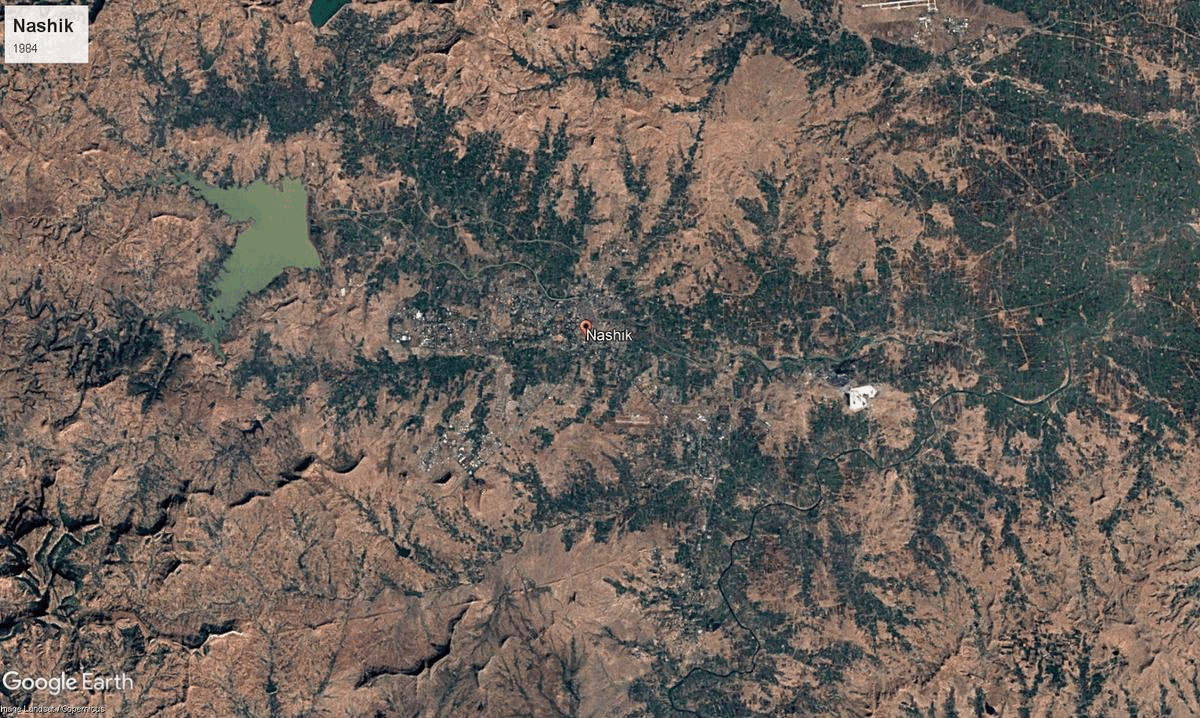Nashik

15,530 sq. km
~66.58 lakh (2019)
934 (2011)
~ ₹1.04 crore (2019)
~ ₹1.56 lakh (2019)
Nashik district, set in northern Maharashtra with Nashik city as its headquarters, is steeped in mythology, history, and diverse landscapes. The city’s name derives from the Sanskrit “Nasika” (nose) and is famously tied to the Ramayana, where Lakshman cut off the nose of Shurpanakha on the banks of the Godavari—making Nashik a storied pilgrimage spot and one of the four holy sites hosting the Kumbh Mela every 12 years. Nashik also appears as "Navashikh," "Trikantak," and "Janasthana" in Hindu traditions. Nashik comprises 15 talukas: Nashik, Sinnar, Igatpuri, Trimbak, Niphad, Yeola, Peth, Dindori, Chandwad, Baglan, Deola, Kalwan, Malegaon, Nandgaon, and Surgana.
Archaeological findings reveal occupation since the Stone Age. Historically, Nashik was part of the Mauryan Empire under Emperor Ashoka (3rd century BCE). It was later ruled by the Satavahanas, Abhiras, Traikutakas, Vakatakas, Kalachuris, Chalukyas, Rashtrakutas, and Yadavas of Devagiri. The Delhi Sultanate annexed it in 1311, and it was later ruled by the Bahmani Sultanate, Ahmadnagar Sultanate, and the Mughals. During the Maratha rule, Nashik became a key military and cultural center, with forts such as Salher and Mulher playing important roles. The region was integrated into British India in 1818, and Nashik district was officially formed in 1869.
The district is home to culturally and historically significant sites. Trimbakeshwar Jyotirlinga, one of the twelve Jyotirlingas, is an important pilgrimage center, also marking the origin of the Godavari River. The Kalaram Mandir in Nashik city, built in black stone, is a major religious site. Pandavleni Caves, ancient Buddhist rock-cut caves, date back to the 2nd century BCE. Mangi-Tungi in Baglan taluka features the tallest Jain murti in the world. Nashik also hosts the one of the largest gatherings of Hinduism, the Kumbh Mela, held every 12 years, drawing millions of people. In additon, it has deep connections to social reform, serving as a focal point for Vinayak Savarkar’s revolutionary movement and Dr. Ambedkar’s landmark Kalaram Temple entry agitation. Nashik’s thriving cultural scene features Marathi theatre, libraries (notably Sarvajanik Vachanalaya), music, and festivals, while the region is home to iconic poets, artists, and freedom fighters.
Geographically, Nashik stretches from the rugged Western Ghats to broad, fertile Deccan plateau valleys. The Western Ghats (Sahyadri Range) in the west and the Satmala-Chandwad Range in the east influence the local geography. The Godavari River, originating at Trimbak, waters much of the district, while the Girna, Darna, Kadva, and Mosam rivers sculpt the varied terrain. Three major hill ranges, Satmala, Selbari-Dholbari, and Trimbakeshwar, provide scenic vistas and landmarks for trekkers and devotees. The district’s soil and climate make it a crossroads, reflecting the diversity of all Maharashtra’s natural regions: hills, plains, vineyards, and river valleys
Nashik’s economy is dynamic and multifaceted. Widely called the “Wine Capital of India,” Nashik produces, by some accounts, over half of the country’s wine grapes and hosts celebrated vineyards, drawing tourists and connoisseurs year-round. It leads the state in cultivation of onions, tomatoes, grapes, pomegranates, and even jowar, wheat and bajra. Modern industry thrives alongside tradition: Nashik is a major defense and aerospace center (HAL Ozar), a print and currency hub (India Security Press), and a textile and manufacturing node with numerous industrial estates. The district has food processing, textile, and automobile industries, with Sinnar, Malegaon, and Igatpuri being major industrial hubs. Manmad, a key railway junction, facilitates trade and transport.
